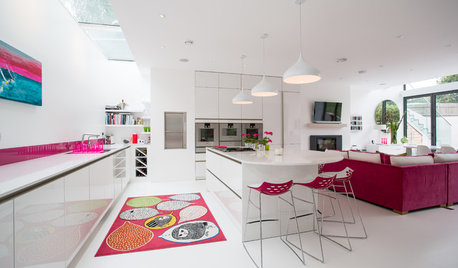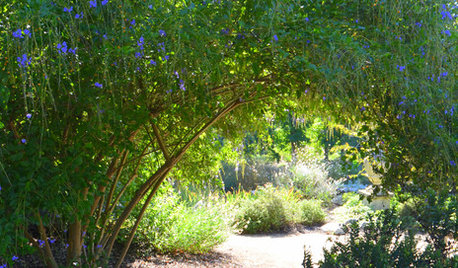heat zone map
Related Stories

KITCHEN WORKBOOKNew Ways to Plan Your Kitchen’s Work Zones
The classic work triangle of range, fridge and sink is the best layout for kitchens, right? Not necessarily
Full Story
FLOWERS AND PLANTSHeat-Loving Duranta Erecta Blooms From Spring Into Early Fall
Golden dewdrops, a versatile tropical shrub, has delicate purple and white blossoms
Full Story
GREAT HOME PROJECTSHow to Add a Radiant Heat System
Enjoy comfy, consistent temperatures and maybe even energy savings with hydronic heating and cooling
Full Story
GARDENING GUIDES10 Cold- and Heat-Tolerant Perennials and Shrubs for the Arid West
These flowering native plants shrug off the cold of winter and heat of summer while adding beauty to the drought-tolerant landscape
Full Story
FLOORSWhat to Ask When Considering Heated Floors
These questions can help you decide if radiant floor heating is right for you — and what your options are
Full Story
GARDENING GUIDES10 Drought-Tolerant Shrubs That Thrive in Full Sun and Reflected Heat
Got a hot spot in your garden where plants often die? Try these tough shrubs that add beauty while shrugging off the heat
Full Story
FLOORSIs Radiant Heating or Cooling Right for You?
Questions to ask before you go for one of these temperature systems in your floors or walls (yes, walls)
Full Story
FLOORSFloors Warm Up to Radiant Heat
Toasty toes and money saved are just two benefits of radiant heat under your concrete, wood or tile floors
Full Story
BATHROOM DESIGNWarm Up Your Bathroom With Heated Floors
If your bathroom floor is leaving you cold, try warming up to an electric heating system
Full Story
GREEN BUILDINGInsulation Basics: Heat, R-Value and the Building Envelope
Learn how heat moves through a home and the materials that can stop it, to make sure your insulation is as effective as you think
Full StoryMore Discussions







daninthedirt (USDA 9a, HZ9, CentTX, Sunset z30, Cfa)Original Author
digdirt2
Related Professionals
Cottonwood Landscape Architects & Landscape Designers · Forest Acres Landscape Architects & Landscape Designers · Owings Mills Landscape Architects & Landscape Designers · Columbine Landscape Contractors · El Sobrante Landscape Contractors · Fair Lawn Landscape Contractors · Lexington Landscape Contractors · Saint George Landscape Contractors · Wallingford Landscape Contractors · Brea Driveway Installation & Maintenance · Cambridge Driveway Installation & Maintenance · Fullerton Driveway Installation & Maintenance · Grand Rapids Driveway Installation & Maintenance · Sterling Driveway Installation & Maintenance · Parker Driveway Installation & Maintenancedaninthedirt (USDA 9a, HZ9, CentTX, Sunset z30, Cfa)Original Author
wayne_5 zone 6a Central Indiana
daninthedirt (USDA 9a, HZ9, CentTX, Sunset z30, Cfa)Original Author
pnbrown
daninthedirt (USDA 9a, HZ9, CentTX, Sunset z30, Cfa)Original Author
woohooman San Diego CA zone 10a
pnbrown
daninthedirt (USDA 9a, HZ9, CentTX, Sunset z30, Cfa)Original Author
brittanyw
daninthedirt (USDA 9a, HZ9, CentTX, Sunset z30, Cfa)Original Author
squirrelwhispererpup
woohooman San Diego CA zone 10a
tishtoshnm Zone 6/NM
daninthedirt (USDA 9a, HZ9, CentTX, Sunset z30, Cfa)Original Author
seysonn
pnbrown
daninthedirt (USDA 9a, HZ9, CentTX, Sunset z30, Cfa)Original Author
pnbrown